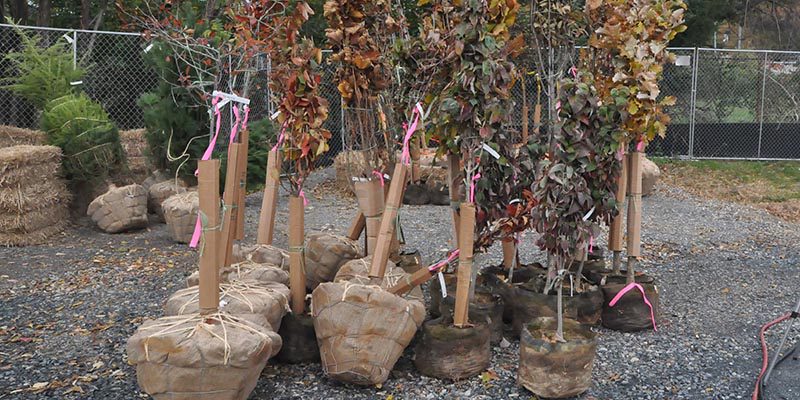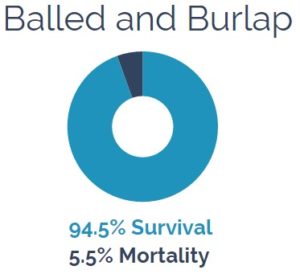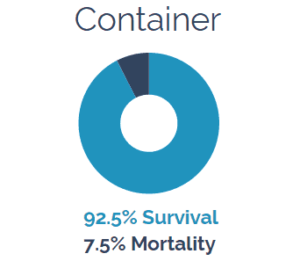
 Casey Trees loves data. Data informs what we plant, where we source from, how we care for trees, and on and on. That is why the Survival Study, conducted every summer, is so important — it provides us with that necessary data to propose hypotheses and/or draw conclusions to better our practices and give trees we plant the best chance at a long, healthy life.
Casey Trees loves data. Data informs what we plant, where we source from, how we care for trees, and on and on. That is why the Survival Study, conducted every summer, is so important — it provides us with that necessary data to propose hypotheses and/or draw conclusions to better our practices and give trees we plant the best chance at a long, healthy life.
For example, we closely look at growing and harvesting techniques.
 If you have volunteered at one of our Community Tree Plantings, you have probably planted a ball and burlap tree, commonly called B&B. These trees have large, heavy root balls weighing upwards of 150 pounds, and are harvested using a tree spade.
If you have volunteered at one of our Community Tree Plantings, you have probably planted a ball and burlap tree, commonly called B&B. These trees have large, heavy root balls weighing upwards of 150 pounds, and are harvested using a tree spade.
This method, an industry standard, keeps a large amount of roots attached to the young sapling. That said, B&B trees are very heavy and can be difficult to transport.
Recently, Casey Trees has begun sourcing container stock, which are trees that have been planted in a plastic container that has been placed in the ground. One of the reasons we have done this is because of an increase demand for fruit trees and fruit trees are only planted in containers. The other reason is that tree industry is planting more trees in containers to provide consumers another option that is easier to transport.
 Containerized trees tend to have a less natural root growth pattern, but are much easier to dig out of the ground and transport. For every one B&B tree, we can fit at least three container trees on our trucks.
Containerized trees tend to have a less natural root growth pattern, but are much easier to dig out of the ground and transport. For every one B&B tree, we can fit at least three container trees on our trucks.
A newer entrant onto the scene are root bag trees. Similar to container stock, saplings are grown in a fabric container, rather than plastic, and placed in the ground. The advantage is that the tree’s roots can actually grow through the bag, avoiding an unnatural circling pattern, and it is relatively easy to harvest, transport and plant.
But how do methods compare to one another and why?
Our analyses shows that our B&B and container stock have a similar survival rate, with B&B trees slightly edging out container trees. We believe the reason to be the stunted growth and smaller root systems of container trees. We look forward to a more robust analysis including the Root Bag trees – after there is enough data on this newer tree production method!
We will continue to plant all three types of tree stock and monitor their survival rate, along with those we have previously planted. With each year of data we collect, we will be able to draw more conclusions and improve the overall survival rate of our trees.
Missed parts 1 and 2 of this series? Check them out here and here.

